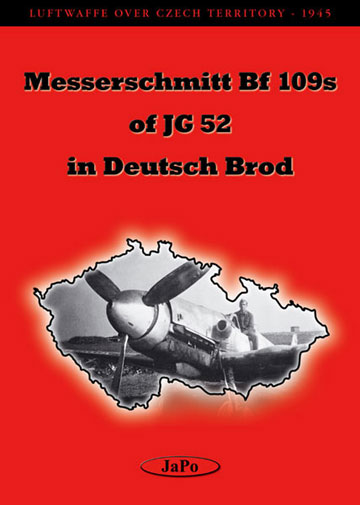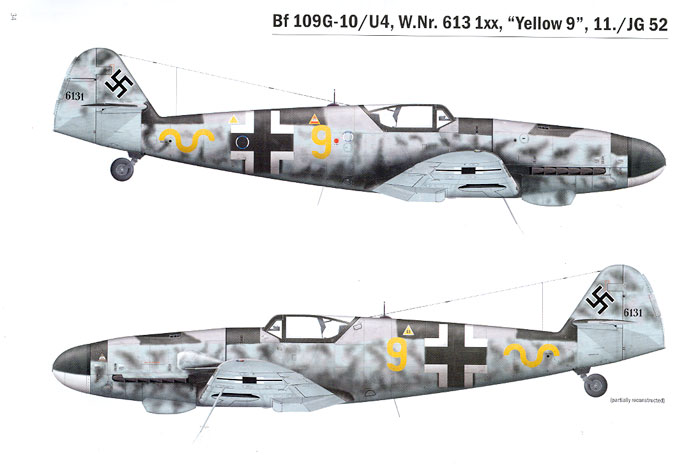|
Messerschmitt Bf 109s
of JG 52
in Deutsch Brod
JaPo
|

|
S u m m a r y
|
| ISBN: |
Not Quoted |
| Media and Contents: |
Soft cover; 56 pages plus
covers;. |
| Price: |
Not known at this time |
| Review Type: |
FirstRead |
| Advantages: |
Excellent, in depth examination
of the camouflage and markings of six late-war Messerschmitt Bf 109s
at the end of WWII; good introductory text; very high quality colour
profiles (each presenting both side views); helpful and informative
four-view captioned illustrations of the camouflage case studies;
full text in English |
| Disadvantages: |
|
| Recommendation: |
Highly Recommended for Luftwaffe fans |
Reviewed by Brett Green

HyperScale is proudly supported by Squadron.com
Before I start this review I should declare that I am quite
fascinated by WWII aircraft camouflage and markings, that I am
especially interested in Luftwaffe aircraft and that, furthermore,
late-war colours are a special area of attention for me.
Considering these areas of interest, it is not surprising that I am
delighted with JaPo's latest publication!
Japo's "Messerschmitt Bf 109s of JG 52 in Deutsch Brod" comprises 56
pages between soft covers, packed with photos, profiles, drawings and
tables. The book mainly focuses on the camouflage and markings of six
late-war Messerschmitt Bf 109s.
Deutsch Brod was a Czech airfield taken over by the Luftwaffe in
September 1939. It was used for training, repairs, transport and other
duties during the war years. By the first months of 1945, Deutsch Brod
was near the front lines and various Luftwaffe units were transferred to
the airfield. These included JG 52 in April 1945. The book spends the
first 13 pages discussing the history of the airfield and the operations
of JG 52 in these last weeks of the war.
The book then describes six fascinating Messerschmitt Bf 109s based
at Deutsch Brod during this period. The greatest attention is given to
camouflage and markings. All the aircraft are described in detail using
text, two colour side profiles each, four-view drawings with captions
and notes, and wartime photos.

Some of the aircraft feature minor variations from regular Luftwaffe
camouflage, while others are genuinely outlandish! One example of the
latter is "Yellow 11", a Bf 109G-10/R6 in overall dark green upper
surfaces. There are also photos and descriptions of other Gustavs
painted in similar fashion.
The colour profiles are very attractive and well detailed, and the
photos are well reproduced. The supporting text, captions and tables add
to the comprehensive coverage of these fascinating case studies.
|
Home | What's
New | Features
| Gallery |
Reviews | Reference
| Forum
| Search